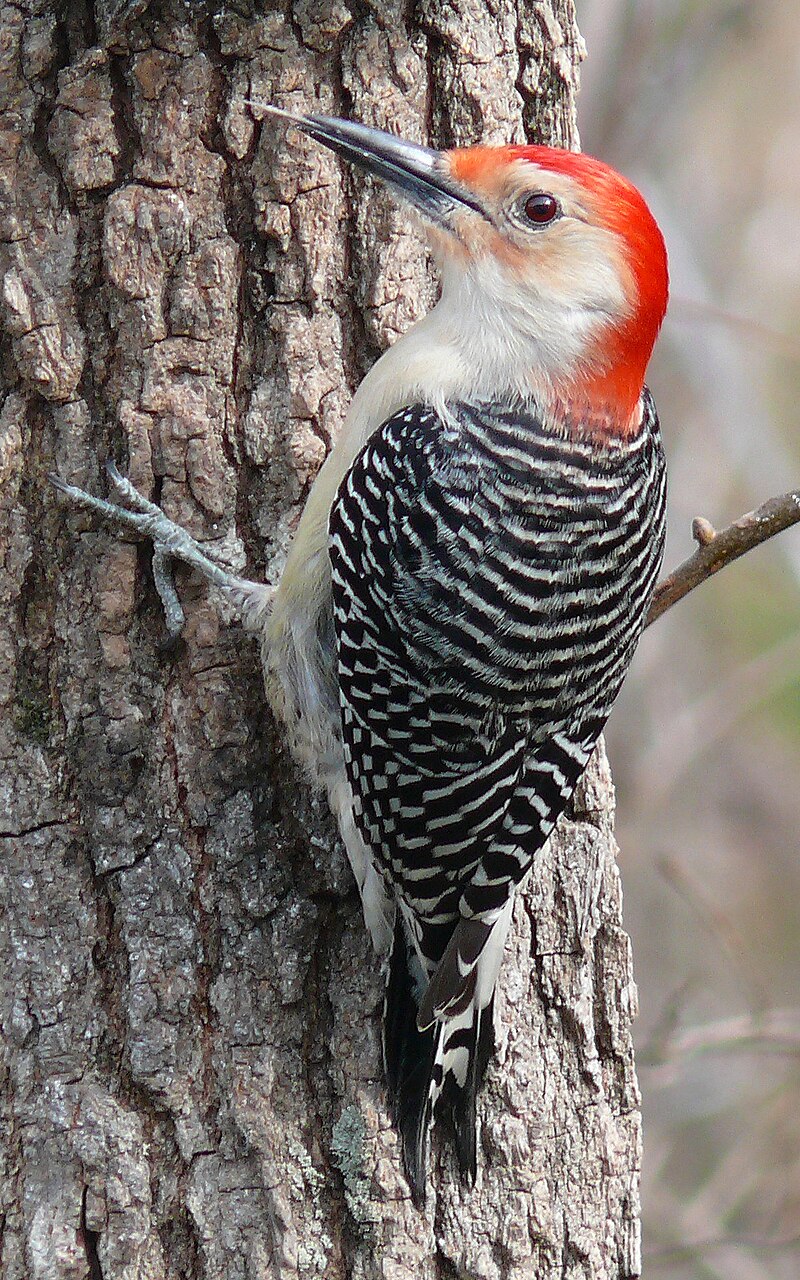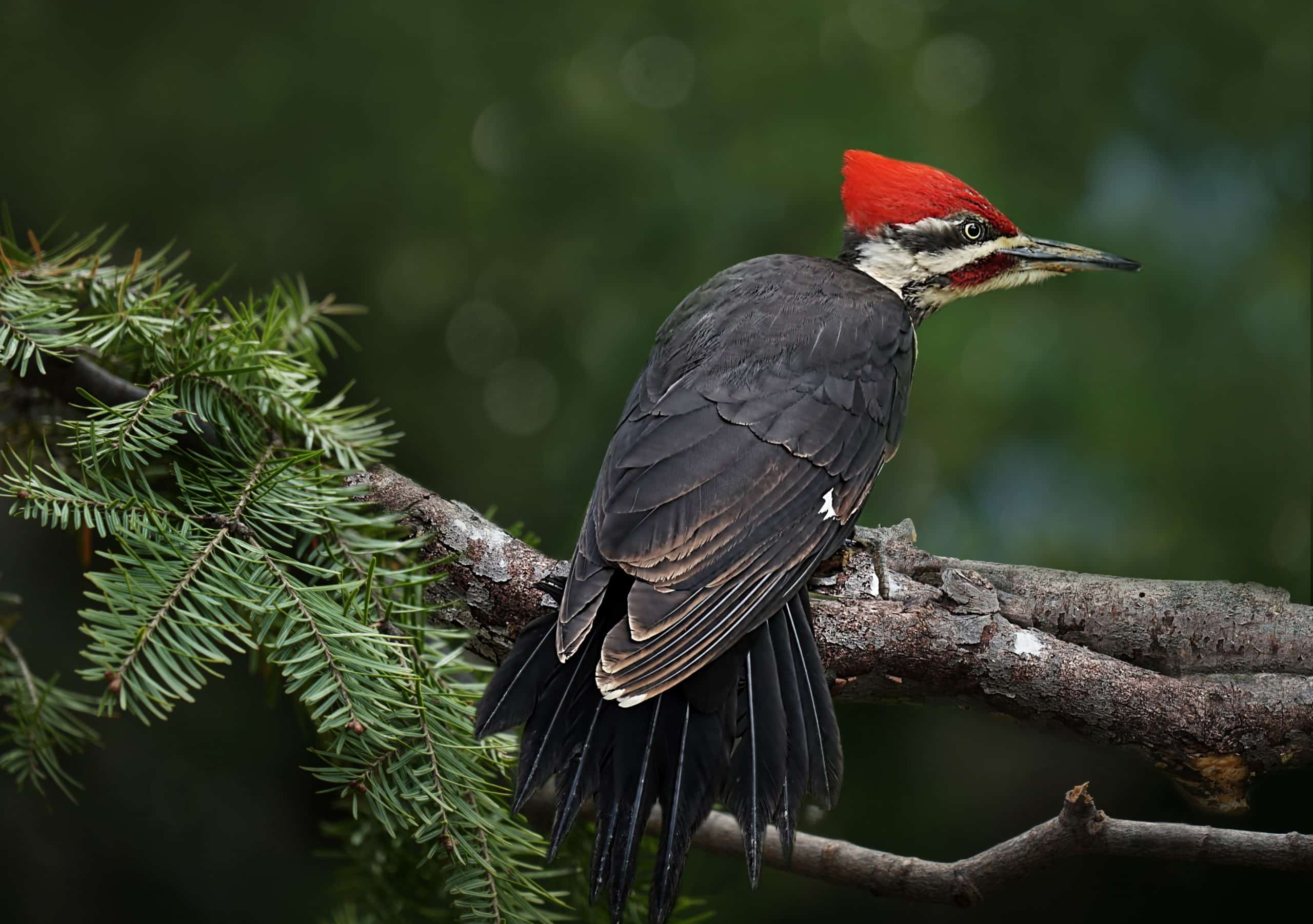Checking Out Woodpeckers in Florida Habitats: Where to Identify These Birds
Checking Out Woodpeckers in Florida Habitats: Where to Identify These Birds
Blog Article
Woodpeckers: A Comprehensive Guide to Comprehending These Distinct Birds
Woodpeckers, with their distinctive habits and physical attributes, have actually long astounded the inquisitiveness of ornithologists and nature fanatics alike. As we explore the intricate composition, varied species, and ecological relevance of woodpeckers, a deeper appreciation for these distinct birds and the secrets they hold unfolds.

Woodpeckers' Drumming Habits
Woodpeckers exhibit a rhythmic and specific drumming habits that offers different important functions in their day-to-day lives. This behavior is mainly related to interaction, territory protection, and foraging. The unique drumming audio is produced by the rapid pecking of their beaks against tough surface areas such as tree trunks, branches, or perhaps steel objects.
Communication is a critical facet of woodpecker habits, and drumming plays a considerable function in this process. Woodpeckers make use of drumming to develop their presence, draw in companions, and keep contact with their companions and offspring. The regularity, intensity, and duration of drumming series share particular messages to other woodpeckers in the location.
In addition to communication, woodpeckers utilize drumming actions for area protection. Woodpeckers in Florida. The loud and repetitive drumming functions as an advising to potential trespassers, indicating that the area is currently asserted. By developing their area with drumming, woodpeckers decrease the possibility of conflicts over useful resources such as food and nesting websites
Furthermore, woodpeckers additionally utilize drumming as a foraging technique. The balanced pecking aids them situate insects concealing under the bark of trees by creating resonances that disrupt the target's concealment. This habits showcases the adaptability and ingenuity of woodpeckers in utilizing their drumming skills for several necessary purposes.
Unique Adjustments for Tree Climbing
Having mastered the art of drumming to interact, defend territory, and forage, woodpeckers have actually progressed one-of-a-kind adaptations that promote their exceptional climbing up capacities in their arboreal habitats. One essential adjustment is their specific feet. Woodpeckers have zygodactyl feet, with 2 toes aiming ahead and 2 toes directing backwards. This setup offers a strong grasp on the upright surface areas of trees, allowing them to cling effortlessly while foraging for pests or drumming. Additionally, woodpeckers have tight tail plumes that function as a prop to support their bodies as they climb up. These tail plumes provide security and equilibrium, allowing woodpeckers to navigate up tree trunks with precision and dexterity.
Furthermore, woodpeckers have powerful neck muscle mass and an unique head structure that help in their climbing capabilities. Their solid neck muscle mass allow them to swiftly peck at tree bark without experiencing whiplash, while their thick head and small brain act as shock absorbers, safeguarding them from the effect of repeated drumming. These adaptations jointly make it possible for woodpeckers to browse the vertical world of trees with efficiency and grace.

Duty of Woodpeckers in Communities
By foraging for insects under the bark of trees, woodpeckers help manage parasite populations, preventing break outs that might damage the overall health and wellness of the woodland. In addition, woodpeckers develop dental caries in trees that serve as crucial nesting websites for a range of other bird types, promoting biodiversity within the ecological community.
Additionally, the drumming and articulations of woodpeckers play a vital duty in interaction and area facility. These audios not just serve to bring in mates yet likewise assist specify limits in between different woodpecker territories, decreasing conflicts and advertising an unified coexistence within the woodland community. On Recommended Reading the whole, the existence of woodpeckers in woodland environments highlights their value as keystone types, affecting the dynamics and working of these habitats in diverse methods.
Composition: Specialized Beaks and Feet
In the intricate web of forest ecological communities, the specialized beaks and feet of woodpeckers are important adjustments that enable them to fulfill their crucial environmental duties. Woodpeckers possess unique physiological attributes that are especially made to help them in their foraging and nesting behaviors.
One of the most distinctive attribute of woodpeckers is their strong, chisel-shaped beaks. These beaks are completely adapted for exploration right into wood to reveal bugs, larvae, and sap covert underneath the bark of trees. The strong muscles and strong structure of their beaks permit woodpeckers to peck at a rate of approximately 20 times per second without triggering damages to their skulls.
Furthermore, woodpeckers have specialized feet that help in their acrobatic climbing capacities. Their feet have two toes aiming forward and 2 toes directing backward, supplying a strong grasp on vertical surface areas (Woodpeckers in Florida). This special foot plan, along with rigid tail plumes that serve as a supportive prop, permits woodpeckers to important source hold on to tree trunks and branches easily while they browse for food or excavate nesting dental caries
Woodpecker Types Variety
What aspects add to the impressive diversity of woodpecker types throughout different environments and regions? Woodpeckers are a varied group of birds found across different ecosystems worldwide, with over 200 recognized species displaying adaptations to different settings. One vital variable driving this diversity is the accessibility of suitable environments. Woodpeckers have advanced to populate a range of atmospheres, from forests and timberlands to meadows and deserts, each presenting unique difficulties that have actually influenced the advancement of unique woodpecker types.
These adaptations enable woodpeckers to forage efficiently in their corresponding environments, decreasing competition among types and promoting niche distinction. Furthermore, geographical seclusion and historical elements have played a role in shaping the circulation and diversity of woodpecker varieties, leading to the wide array of read this post here specialized adaptations seen in these fascinating birds.

Final Thought
In final thought, woodpeckers are fascinating birds that show distinct drumming habits, specialized adjustments for tree climbing, and play important roles in communities. With a varied array of woodpecker species found worldwide, these birds are crucial for maintaining the health and wellness and balance of forests and forests.
Report this page